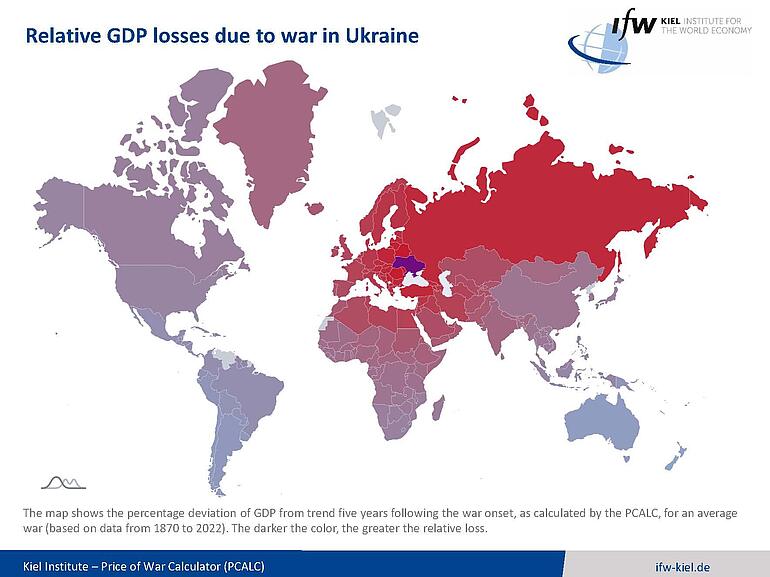News
Economic Fallout: The Price of War

Wars often cause immense economic damage. In war sites, the capital stock, which comprises economic assets such as machinery and buildings, is destroyed. At the same time, economic output, on average, falls by 30 percent and inflation rises by about 15 percentage points over five years. Yet, non-belligerent third countries also bear high costs, especially the neighboring countries of war sites: here, output falls by, on average, 10 percent after five years while inflation rises by 5 percentage points over the same period. Wars have significant negative external effects on neighboring countries. For countries further away, however, the effects can be positive: wars also create winners and losers in the global economy.
These findings are based on a new study by researchers at the Kiel Institute and the University of Tübingen, which is summarized in the Kiel Policy Brief “The Price of War” and methodologically substantiated in the corresponding Kiel Working Paper (Federle et al., 2024). The publications are accompanied by a new online tool that can be used to calculate the economic costs of hypothetical wars (Price of War Calculator, PCALC, see below).
Ukraine—what the war could cost by 2026
Based on the experience from past wars, the authors estimate that the Russian invasion will lead to an output loss in Ukraine of about USD 120 billion by 2026 and a concurrent reduction in Ukraine's capital stock of more than USD 950 billion. At the same time, the economic costs on non-belligerent third countries are also substantial with a GDP loss of about USD 250 billion, USD 70 billion of which are borne by countries of the European Union and about USD 15–20 billion by Germany alone.

“The calculations are based on the costs of ‘typical’ interstate wars in the past. Depending on the duration and intensity of the war, more or less severe scenarios are conceivable,” says Jonathan Federle, researcher at the Kiel Institute and author of the study. “The spillover effects we calculated for other countries primarily take into account the trade relationships resulting from geographical proximity and the size of the economy in which a war breaks out.”
Examples of Taiwan and Iran–different intensity of trade integration
If an economy is highly integrated, as is the case in Taiwan, the numbers tend to represent the lower end of the expected economic costs of war; in the case of a war outbreak on Taiwanese soil, the researchers expect global output losses of about USD 2.2 trillion within five years.
In the event of Iran becoming a war site, the costs for the global economy in terms of lost output could be as high as USD 1.7 trillion over a five-year period. The low level of global trade integration of Iran, which is also due to sanctions, implies that the external costs estimated by the researchers are likely on the upper end in this case.
Moritz Schularick, President of the Kiel Institute, and co-author of the study, summarizes the key findings. “The Russian attack on Ukraine has caused enormous economic damage not only in Ukraine but also in neighboring countries and in Germany. Overall, the calculations show once again how high the economic value of peace is and how disastrous a war on one's own soil is in every respect. Military strength and credible deterrence, which make external attacks unlikely, therefore also make sense from an economic point of view.”
Price of War Calculator—PCALC
Our new online tool, the Price of War Calculator (PCALC), is freely available at https://priceofwar.org/. It provides a simple way to calculate the economic impact of hypothetical wars in war sites and their spillovers to other countries. The tool is based on the study “The Price of War” (Federle et al., 2024) and thus condenses the historical experience of the last 150 years. New or hypothetical war scenarios can deviate from the historical average in various ways. As such, the calculations can only be regarded as a ballpark rather than a precise estimate.


